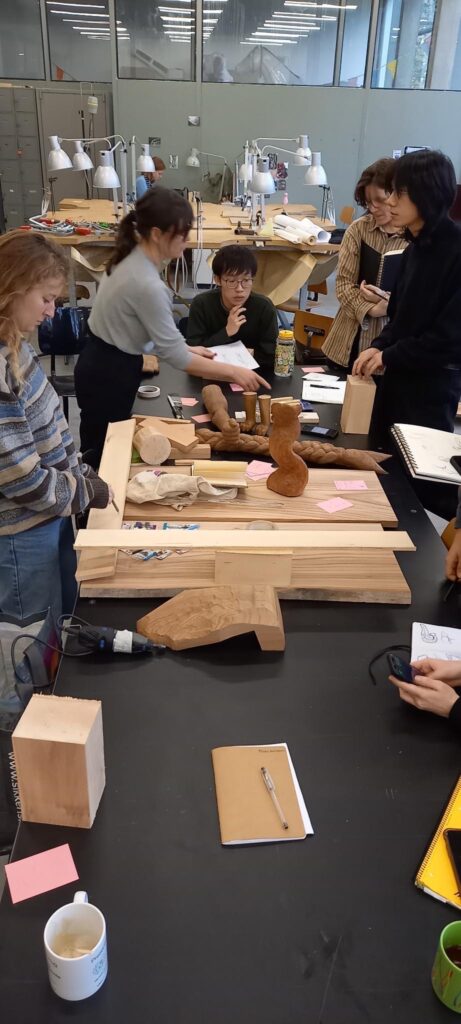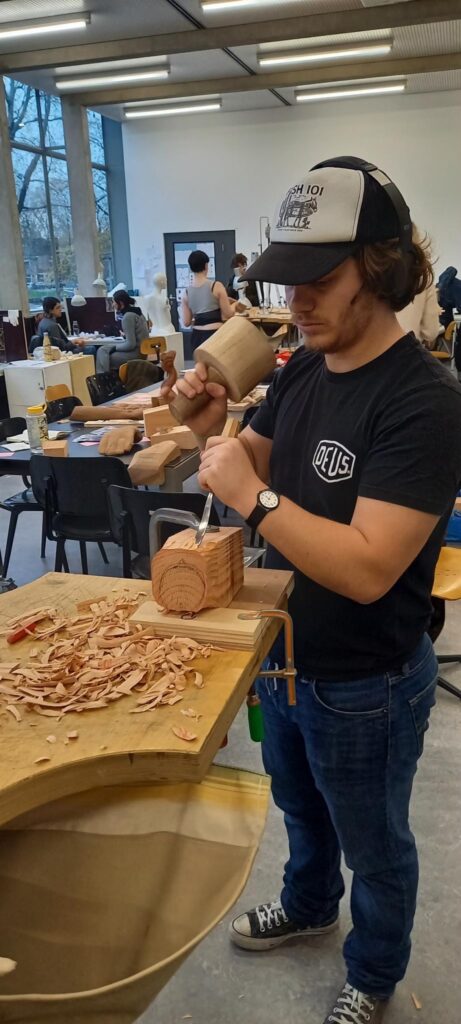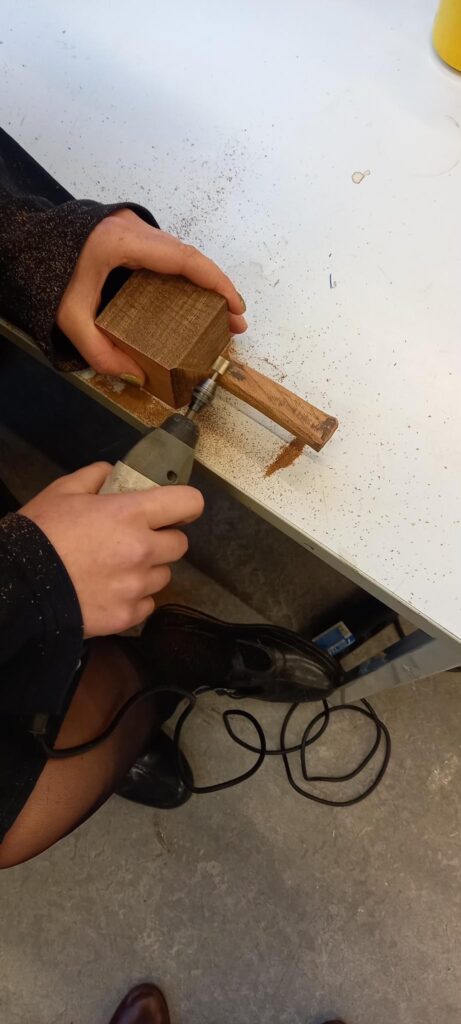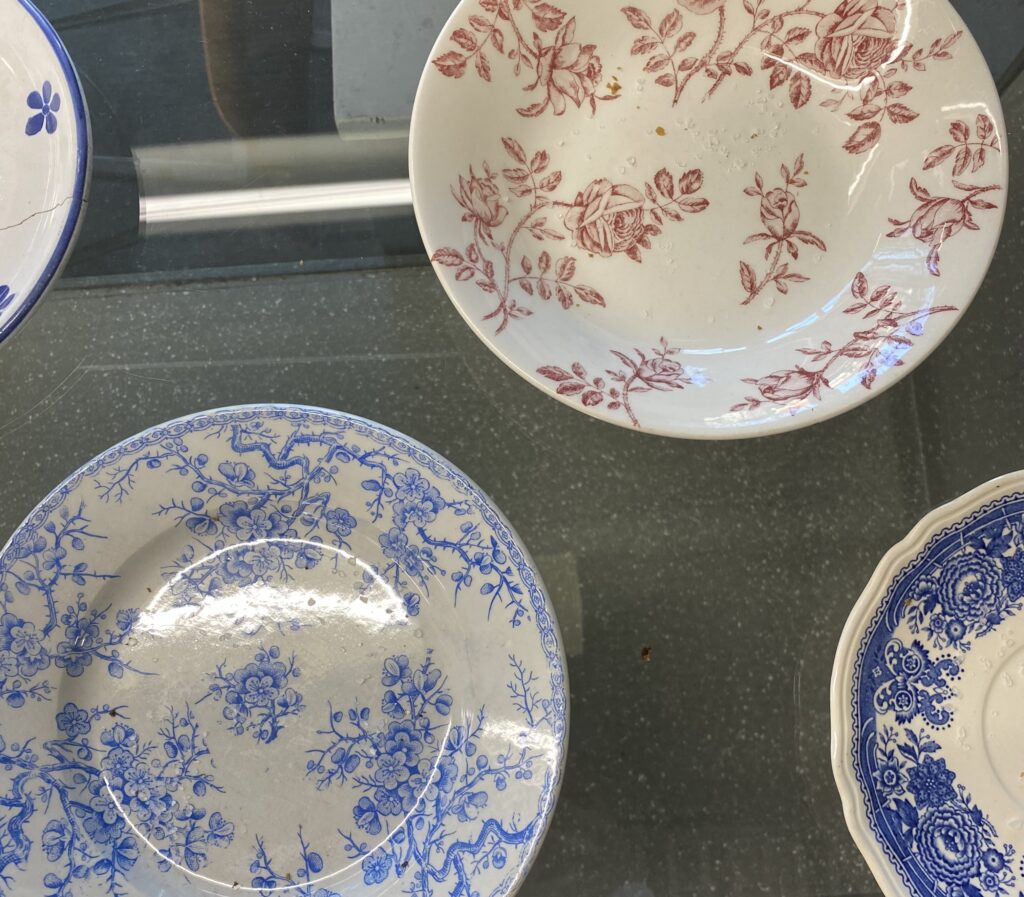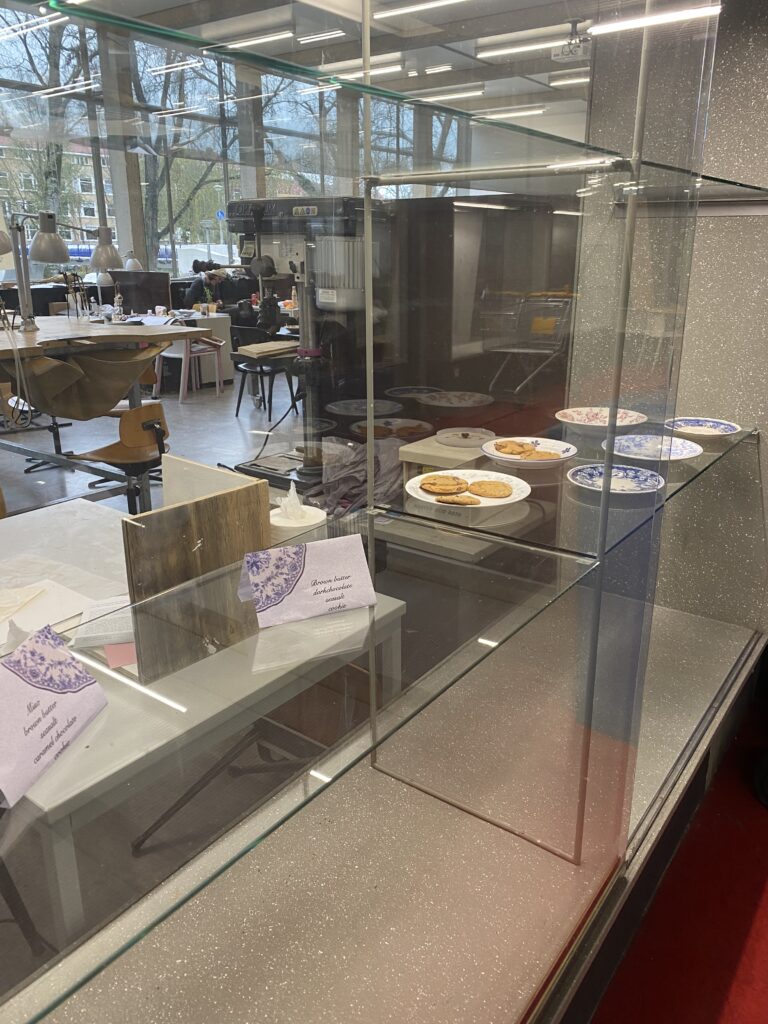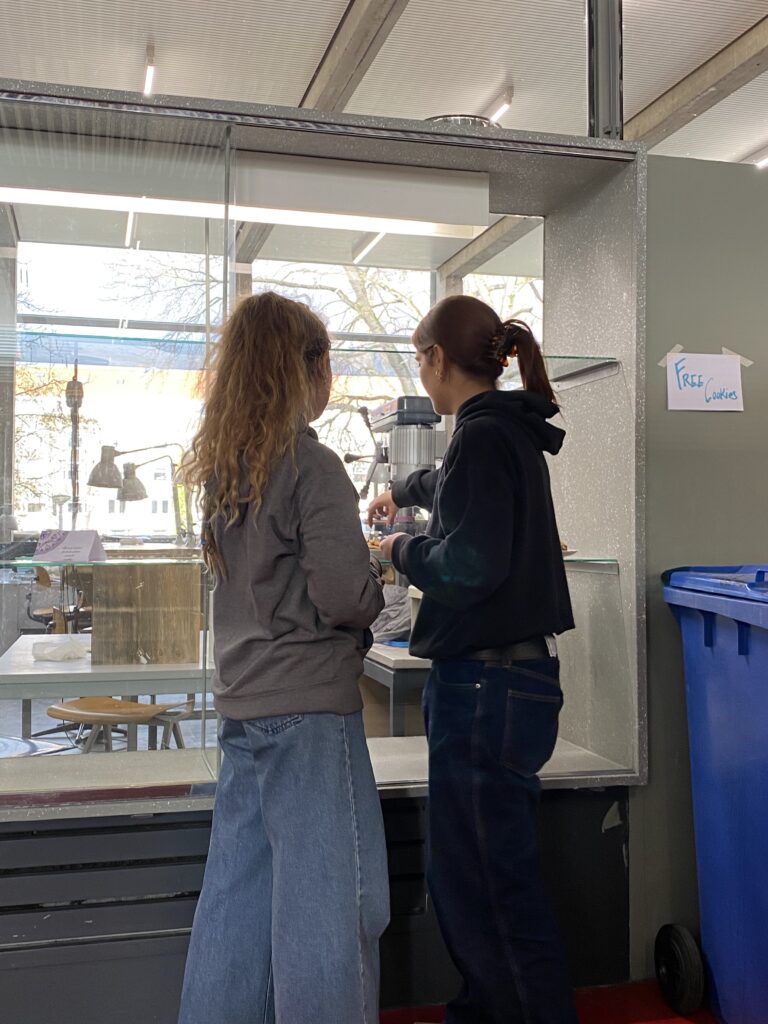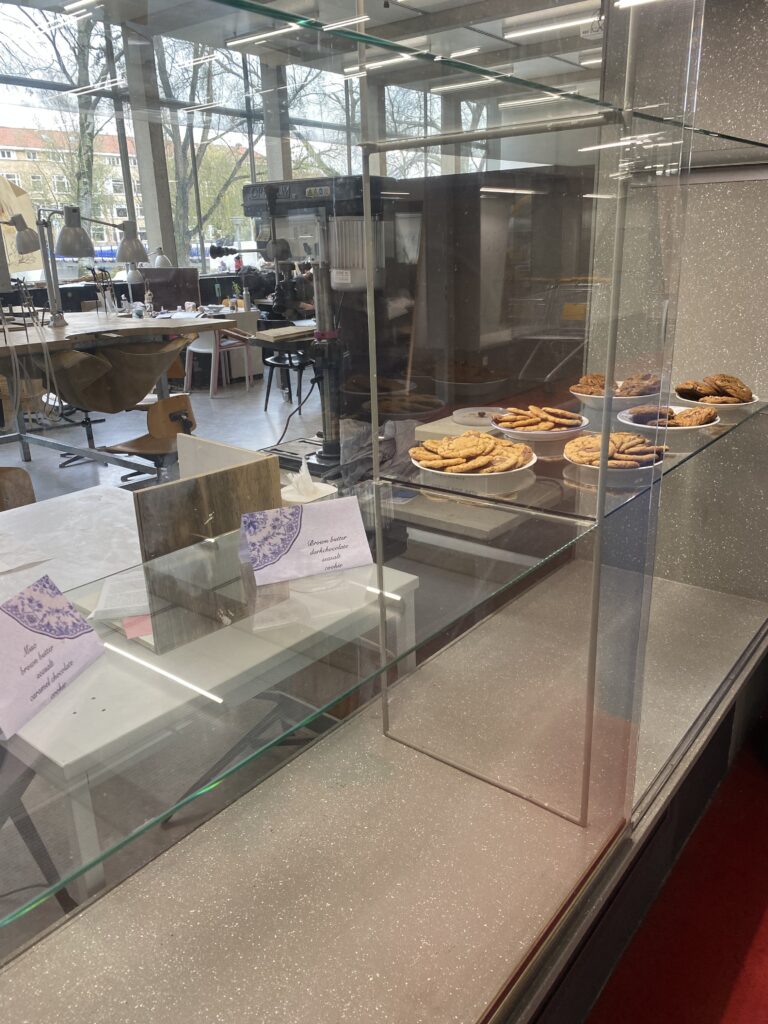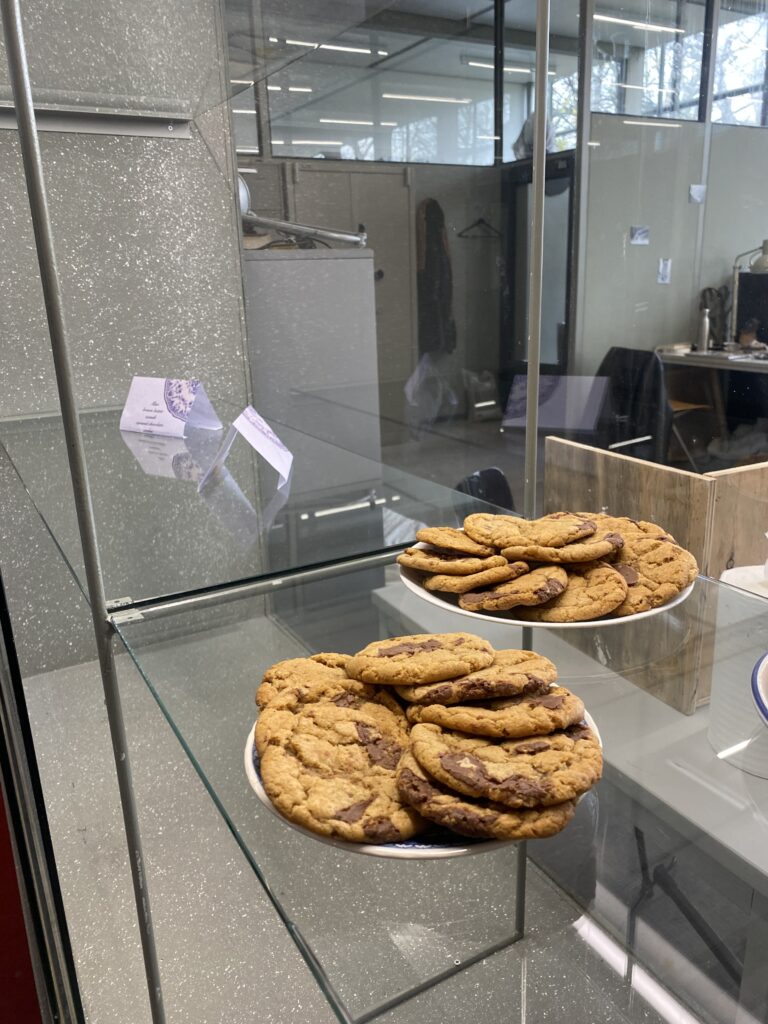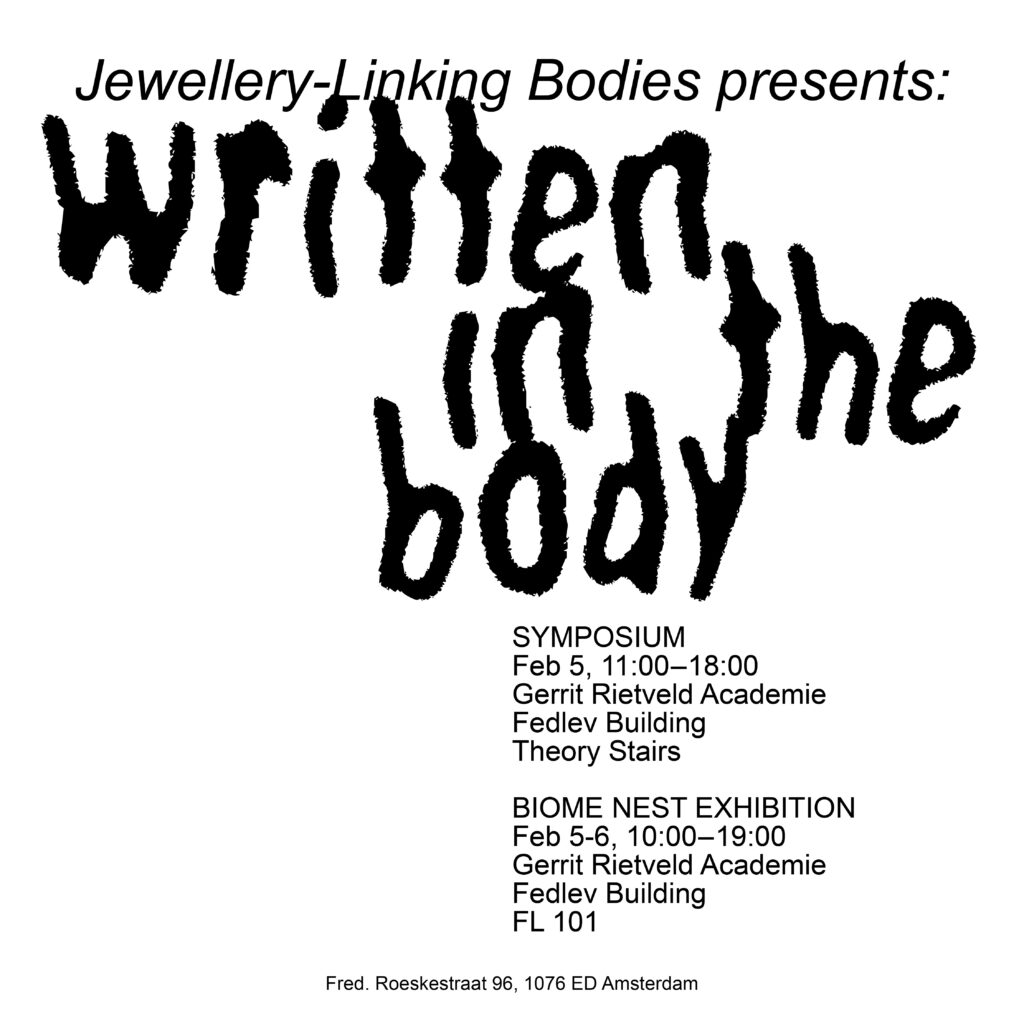
Dear students, colleagues and friends of the Jewellery-Linking Bodies department,
You are welcome to join us on Monday February 5 for Written in the Body – a day-long program organized by the Jewellery-Linking Bodies department, which asks how we can unlearn and reimagine ideas of sickness and health. Written in the Body looks at the seep of medicalized discourse into our ordinary lives, and dissects how naturalizing and normalizing practices shape what we know of bodies and genders. What other ways can we be in and know our bodies?
The Jewellery-Linking Bodies Department takes as its starting point the most intimate objects related to bodies, querying what kinds of agencies and relations are possible if we envision these subject/object roles differently.
The day-long program will be accompanied by an exhibition presenting Jewellery- Linking Bodies students‘ projects, a commission from the hospital Amsterdam UMC to intervene in the medicalized spaces of new examination rooms at the VU Medical Center for the department of Gynecological Oncology. The exhibition Biome Nest will be on display between 5th and 6th of February.
Please get in touch at edelsmeden@rietveldacademie.nl if you have any specific access needs that would make it possible for you to join us for this event. We will do our best to accommodate. The symposium and exhibition space are both wheelchair accessible, and there is a wheelchair accessible toilet on the ground floor.
Special thanks to the Amsterdam UMC especially Luc van Lonkhuijzen and his team, Menno Dudok van Heel for the collaboration and for the support in realizing this project.
Program Schedule
| 11:00 – 11:10 | Life lives in the ga(s)ps by Angelo Custodio |
| 11:10 – 11:20 | Introduction by Sonja Bäumel |
| 11:20 – 11:50 | Cultivating esthesia by Staci Bu Shea |
| 11:50 – 12:10 | Dialogue between Staci Bu Shea & Pernilla Manjula Philip |
| 12:10 – 12:30 | Learning to Live With Ghosts. The Practice of Research. Reading by Angela Jerardi of a text by Moosje M. Goosen |
| Lunch Break | |
| 13:30 – 14:00 | Perfected with time and word-to-mouth by Cranberryjuice |
| 14:00 – 14:20 | Life lives in the ga(s)ps by Angelo Custodio |
| 14:20 - 15:20 | Imaginaries and architectures of care: Navigating through carescapes by Maya Lane & Simone Stergioula |
| Short Break | |
| 15:35 – 16:35 | Moderated group discussion with Angelo Custodio, Staci Bu Shea, Sonja Bäumel, Luc van Lonkhuijzen & Menno Dudok van Heel |
| 16:35 – 16:40 | Closing words by Sonja Bäumel & Angela Jerardi |
| 16:40 – 17:15 | Life lives in the ga(s)ps by Angelo Custodio |
| Biome Nest exhibition (FL 101) by following students: Felicia Carlsson, Shipo Chou, John Cook, Hannah Falcone, Hung Fu Tsai, Dana Haire, Isabel Heatley, Anne-Sophie de Lange, Max van Meeuwen, Lola Orihuela, Emma Panzou-Lespinasse-Ide-Lafargue, June Querido, Niloofar Salehi, Daria Zvarykina. Curated bookshelf by Cranberry Juice collective. | |
| 17:15 – 18:00 | Drinks |
Participants:
Angelo Custodio / life lives in the ga(s)ps
Angelo is a researcher, artist and performer experimenting with voice, writing and sound. He creates sonic based experiences from a crip~queer relation to the world, informed by critical theory and embodied knowledge. Trained as a classical singer, Angelo explores the relations between poetics and techno-somatic ways of voicing. For the occasion of Written in the body, Angelo facilitates three momentaneous flows – (activation, attunement and aesthesia). Through listening, he holds a space for potentially soften the world’s rigidity inscribed in the bodymind.
www.angelocustodio.com
Staci Bu Shea / Cultivating esthesia
Staci Bu Shea (b. Miami, 1988) is a curator, writer, and holistic death care worker based in Utrecht, the Netherlands. Broadly, Bu Shea focuses on aesthetic and poetic practices of social reproduction and care work, as well as its manifestations in interpersonal relationships and daily life, community organizing and institutional practice. Bu Shea is author of the book Dying Livingly as part of the Solution Series edited by Ingo Niermann (Sternberg Press, 2024). They currently teach at the Royal Academy of Art, The Hague. Bu Shea was curator at Casco Art Institute: Working for the Commons (Utrecht, 2017-2022). With Carmel Curtis, they co-curated Barbara Hammer: Evidentiary Bodies at Leslie Lohman Museum of Art (New York City, 2017). Bu Shea holds an MA from the Center for Curatorial Studies, Bard College (2016).
stacibushea.info
Pernilla Manjula Philip
Pernilla Manjula Philip’s work builds on lived experience and encourages contemplation on the intricate interplay between community, needs and healthcare, prompting the fundamental question of determining authority over our bodies and treatment protocols.
She is particularly motivated by ways of hacking and tinkering as collaborative tools of activism and how this informs systems of collective-care.
Her work serves as a testbed for exploring the vulnerabilities and strengths of the collective power of do-it-yourself (DIY) and open-source approaches to medical treatment.
https://www.pernillaphilip.com/
Moosje M. Goosen
Moosje M. Goosen lives and works in Rotterdam, the Netherlands. She is a writer and holds a PhD from the Amsterdam School for Cultural Analysis. Goosen has contributed as an art critic to magazines such as Frieze, Metropolis M and Ixiptla, and also writes fiction and essays in the framework of art exhibitions and events. She has worked in different educational capacities, teaching and mentoring art students (a.o. Sandberg Instituut/School of Missing Studies, Rietveld Academie, Piet Zwart Institute); coordinating the courses of De Appel Curatorial Programme (2011-2013) and the MA Fine Art of the Piet Zwart Institute (2009-2010), co-organizing and participating in academic conferences, and guest teaching university seminars.
https://metropolism.com/nl/feature/48985_het_proces_van_ziekte_heeft_mij_wezenlijk_getransformeerd_moosje_m_goosen_over_haar_phd_onderzoek_en_kunstenaarspraktijk/
Maya Lane, Simone Stergioula / Imaginaries and architectures of care: Navigating through carescapes
Maya Lane (she/her) and Simone Stergioula (they/them) are two of the researchers in ArtiC, an interdisciplinary project exploring aesthetic interventions in spaces of care with a particular focus on the emergency department of the OLVG West. Maya is a medical anthropologist, as well as a chronic illness advocate and Simone is a researcher in critical theory and affective justice both based at the University of Amsterdam. Between them, their interests span across queer ecologies, multispecies care, crip theory, trangender studies, abolition theory, and (an)architecture. They are both open to any and all collaborations!
https://www.uva.nl/en/about-the-uva/about-the-university/strategy/theme-based-collaboration/healthy-future.html#ArtiC-Art-in-Care–Aesthetic-Configurations-Impact-and-Spaces-of-Care
Cranberryjuice / Perfected with time and word-to-mouth
Cranberryjuice is an action based artist collective focused on fighting internalised misogyny and raising awareness about underrepresented subjects connected to care practices and sexual health. Over the last three years we have launched propaganda campaigns, hosted lectures, curated exhibitions, made publications and more. From October to June 2024 we have adapted our collective to being an ExtraIntra platform, opening our doors to new participants and methods of working within the Rietveld and Sandberg community. By merging artists and researchers with multiple experiences, bodies, and approaches, we strive to blur the gap between art and activism, the personal and collective and the public and private.
https://extraintra.nl/initiatives/cranberry-juice/
Luc van Lonkhuijzen
Luc van Lonkhuijzen works since 10 years as a Gynaecologic Oncologist in the Amsterdam UMC. He is especially interested in improving the quality of life of women with a gynaecological cancer. With his colleagues he initiated a clinic aimed at patients who have to deal with the late effects of treatment. Before his training as a gynecologist he worked 4 years in Botswana and Malawi. During his free time he tries to make the Netherlands smokefree.
Menno Dudok van Heel
As the curator of the Amsterdam UMC art collection, I divide my time between two hospital locations: AMC and VUmc. With a background in Art History and Cultural Heritage, my work centers around managing and expanding the art collection. Additionally, I oversee various art commissions for new buildings and construction projects. Managing communications about the collection is also part of my responsibilities. Additionally I ensure that patients, visitors, staff, and students are informed about the artistic and cultural activities at Amsterdam UMC.
Written in the Body symposium:
Date: February 5
Time: 11:00-18:00
Location: Gerrit Rietveld Academie / Fedlev Theory Stairs
Frederik Roeskestraat 96
1076 ED Amsterdam
Biome Nest Exhibition:
Date: Feb 5-6 2024
Time: 10:00 – 19:00
Location: Gerrit Rietveld Academie / Fedlev Building, FL 101
Frederik Roeskestraat 96
1076 ED Amsterdam
The program will be live streamed for those that would like to attend remotely. The streaming link will be posted on the day of the symposium!
Graphic design by Anna Bierler
